Hawaii Volcano Tours: Exploring Aloha State’s Lavable Side
If average tourist activities fail to make you tick, it’s time to put on your hat of badassery and pursue the adventure that will make you palpitate in a mixture of excitement and fear. Ditch that boring routine, pack up and head to Hawaii for some volcanic action. Nothing can make your blood heat up, both figuratively and literally, like getting up close and personal (sort of) with volcanos – the world’s massive masterpieces. Not everyone has the guts to face an active volcano. But you do, of course. Blow off some steam during Hawaii volcano tours while you can, because nothing makes you feel more alive than experiencing life at its fullest!
Volcanoes: What’s to Lav(a)?
Before you start jetting off to see these erratic geological spectacles, you need to understand why a volcano tour is the best remedy for your boredom. It is not only their sheer magnitude or the possibility of an eruption that makes volcanoes a mass to be reckoned with. The following reasons will convince you to push your plan into action before you get cold feet:
IMAGE
TOUR
DETAILS
ROAD TRIP
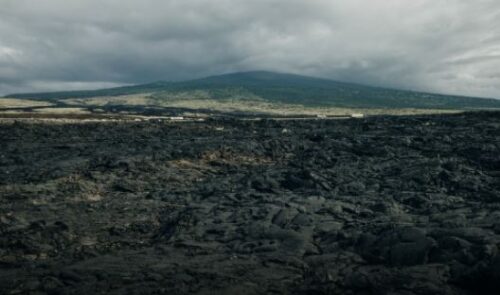
Big Island Volcano Adventure Tour
- Length: 11 hours
- Highlight: Explore cascading waterfalls, craters, and the tsunami-stricken city of Hilo
- Price: $$
HELICOPTER RIDE
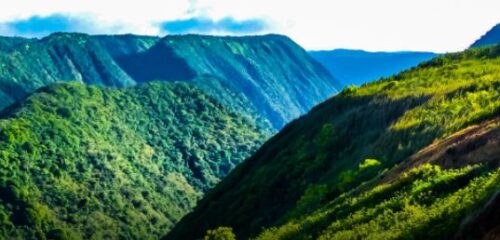
Circle of Fire
- Length: 45 – 50 minutes
- Highlight: Soar over miles of lush forests as you head to witness the power of Kilauea
- Price: $$
ROAD TRIP
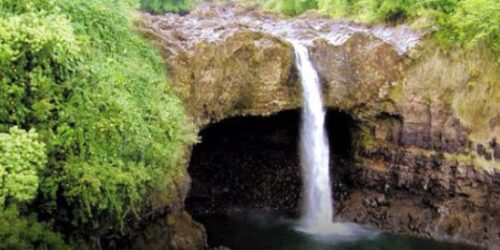
Hawaii Grand Circle Island Tour w/ Volcanoes National Park
- Length: 10 Hours
- Highlight: Tropical exploration of lava fields & coffee farms
- Price: $$
HELICOPTER RIDE
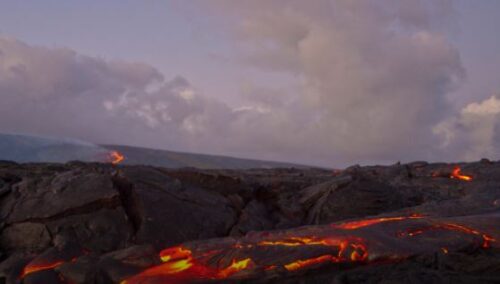
Volcano Deluxe Helicopter Tour
- Length: 1 Hour 45 Minutes
- Highlight: Experience the fiery lava vents of the Big Island’s active volcano, “Kilauea”
- Price: $$$
HIKING TRIP
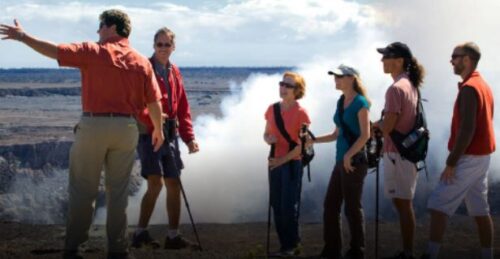
Volcano Unveiled
- Length: 10 – 12 Hours
- Highlight: An in-depth hiking experience on the Island of Hawaii
- Price: $$
TOUR
DETAILS
ROAD TRIP

Big Island Volcano Adventure Tour
- Length: 11 hours
- Highlight: Explore cascading waterfalls, craters, and the tsunami-stricken city of Hilo
- Price: $$
HELICOPTER RIDE

Circle of Fire
- Length: 45 – 50 minutes
- Highlight: Soar over miles of lush forests as you head to witness the power of Kilauea
- Price: $$
ROAD TRIP
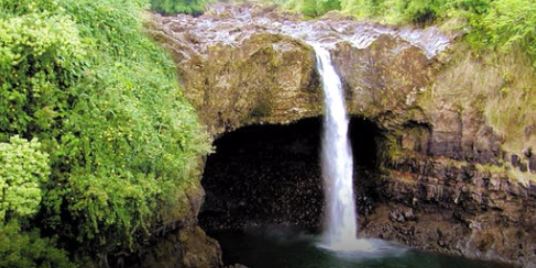
Hawaii Grand Circle Island Tour w/ Volcanoes National Park
- Length: 10 Hours
- Highlight: Tropical exploration of lava fields & coffee farms
- Price: $
HELICOPTER RIDE

Volcano Deluxe Helicopter Tour
- Length: 1 Hour 45 Minutes
- Highlight: Experience the fiery lava vents of the Big Island’s active volcano, “Kilauea”
- Price: $$$
HIKING TRIP

Volcano Unveiled
- Length: 10 – 12 Hours
- Highlight: An in-depth hiking experience on the Island of Hawaii
- Price: $$
Let History Heat You Up
Geologists are pretty convinced that volcanoes were a significant factor in the creation of life. The nutrients expelled through eruptions were likely consumed by the first living organisms on Earth and fueled evolution along with water, sunlight and food. When you have visited a volcano, you can openly brag that you have been to the cradle of humanity itself.
Eerily Beautiful Explosions
Large volcanic eruptions are known to wipe out structures, emit poisonous gases and kill countless number of species. However, nobody can deny that the sensational rush of lava and smoke catapulted into great heights looks more or less like fireworks in a grander scale. The flowing lava leaves an incandescent trail that solidifies into molten rocks, adding raw beauty to the landscape. Take a lot of pictures because you never know when that particular volcano will erupt and eradicate the area you have visited.
Natural Landscape Artists
Aside from contributing to evolution, volcanoes also have a hand in changing the topography, oceans and atmosphere. Impress people by spewing bits of scientific data on how ancient volcanoes freed the elements from earth-bound enclosures to shape the Earth we know today. In reality, if volcanoes were nonexistent or just too lazy to blow up, Earth would be nothing but craters and sand.
Whether you are planning to trek along super-volcano hotspots or planning to sightsee subglacial eruptions, you are guaranteed to witness an extraordinary display of one of nature’s most spectacular displays.
Why Hawaii is So Hot Right Now
The island of Hawaii is a certified hotspot for adventurers around the world with some of the best Hawaiian adventures known to man. Apart from its iconic beaches, thriving flora and fauna, stunning landscapes and distinctive traditions, the Aloha State is the proud offspring of seven (7) volcanoes. In theory, the creation of Hawaii took place due to extreme volcanic activity pushing off the land mass above sea level and forming the tropical islands that we know and love.
Volcanoes are also ingrained in the island culture, despite the destruction it brings to its inhabitants. As a matter of fact, Hawaiians consider Pele (Peh–leh), the Volcano Goddess (also known as the Earth-eating Woman), a sacred figure and bring gifts to Kilauea, where she is rumored to have resided for centuries.
Not-so-fun fact: One of the world’s most active volcanoes is located in Hawaii. Supposedly the Kilauea volcano has been steaming for almost 300,000 to 600,000 years, but it only started showing its fury in 1983 and nobody has been able to stop it ever since. Kilauea has created the world’s longest observed lava lake, and you can witness it on rough waters by booking a Big Island lava boat tour.
Summary of Hawaii’s Sizzling Volcanoes
Out of seven (7) volcanoes, only three are recorded by the United States Geological Survey – Hawaiian Volcano Observatory (USGS – HVO) as “active” and another three (3) as “dormant”. Kohala, being the oldest of Hawaii’s volcanic parents, is now classified as extinct.
Kilauea
Kilauea, which can be translated to “spreading” or “spewing”, is aptly named for its frequent outbursts of lava which gush towards the surrounding terrain, and disrupt the mountainside ecology. On its summit, the Halemaʻumaʻu pit crater is a popular destination for the brave. If that doesn’t compel you to go on Hawaii volcano tours, then what will?
Mauna Loa
Another big name in the volcano category is Mauna Loa, which means “long mountain” in Hawaiian. In fact, you are about to get introduced to the world’s largest active volcano, covering more than half of the Hawaiian Islands. This giant is not a gentle one –studies show that it is capable of spewing a lot more lava than Kilauea. In fact, the USGS utilizes various monitoring stations to determine an impending eruption. Microearthquakes or microquakes are a sign of volcanic unrest.
Mauna Kea
If height is might, then Mauna Kea is, without question, the worldwide winner. Considered as the highest point of the Hawaiian Islands, this dormant volcano boasts a total of 13,802 ft. above sea level. It can be argued that this mountain even dwarfs Mt. Everest in terms of altitude when you actually measure from the base to its pinnacle. The two have a height difference of 3,773 ft., with Mauna Kea as the obvious victor.
Hot or cold: Despite having a fiery history, Mauna Kea is famous among adventure-seeking locals for its snowy summit. Its name was actually inspired by its white peak. Snowboarding and skiing are popular activities during the winter, which is pretty unexpected for a tropical island –and on a volcano, nonetheless!
Hualālai
Hualālai is another shield volcano that brought demise to Hawaiian Villages. Although not as enormous as its neighbors Mauna Loa and Mauna Kea, its ominous presence still keeps locals uneasy. At present, only magma activity can be detected from this volcano, but no expansion of land mass has been recorded.
Haleakala
Aptly named as the “House of the Sun”, the Haleakala is a dormant volcano which serves as the main attraction of the Haleakala National Park in the island of Maui. Mesmerizing panoramic views are guaranteed at its peak, especially during sunrise and sunset.
Don’t Mess With Maui: According to Polynesian Mythology, the sun was captured at the top of Haleakala mountain by no less than Maui himself, the infamous demigod and cultural hero of Hawaii. Wanting to stretch the length of daytime so that his mother, Hina, could complete her work, Maui lassoed the sun and made it slow down its ascent and descent.
Lō‘ihi
Chilling below sea level is the Lō‘ihi volcano, an underwater vent that has grown alongside Kilauea on the base of their bigger sibling, Mauna Loa. However, the youngest addition to the Hawaiian hotspot is a uniquely formed seamount and can only be monitored through hydrophones and earthquakes that emphasize its presence. Due to its circumstance, it would take thousands of years for Lō‘ihi to emerge above sea level or die trying.
Available Volcano Tours to Set Your Heart Ablaze
When it comes to Volcano Geotourism, Hawaii does it best. Thanks to technology, scientists and tourists alike can now observe volcanic activity without burning themselves. Volcanologists are also doing a great job in monitoring the status of Hawaiian volcanoes, and sending out warnings to locals and tour operators when an eruption is likely to happen in the near future.
With this, tourists can put their anxieties to rest and enjoy the lava-ridden scenery in one (or all) of these tour options:
All Hail Helicopters
Sightseeing hundreds of feet above the ground will keep your head spinning, but with phenomenal sceneries clamoring for your attention, motion sickness and fear of heights will be the last things on your mind. If you have the bucks and only want the best, a helicopter volcano tour should be on top of your bucket list. Volcano-hopping on a helicopter provides an extraordinary aerial perspective that allows tourists to appreciate the entirety of the massive phenomena and magma activity. The unobstructed view of the devastation and ecological imbalance would also bring to mind how dangerous and wrathful nature could be.
What to Expect:
- Helicopter tours depend on the weather, so make sure to have a flexible schedule when visiting Hawaii. Aim to go on a day when visibility will be the greatest (a clear day with little to no precipitation), and rebook as necessary for the best results.
- “With or without doors?” That is the question you will likely encounter when fishing out a great helicopter deal. Thrill-seekers eventually go for the latter, but with a great pilot, a door-less tour would still be enjoyed by paranoid tourists. Just remember to listen carefully to the instructions to get the “hang” of it.
- Helicopter tour guides won’t just be any company dummy dictating flowery words by the book. He or she will likely be a local who is as well-versed in Hawaiian culture as he is in maneuvering the aerial transport into gut-wrenching turns. Throw that shyness into the circle of fire below and ask away!
Pyro-packing Essentials:
- Suit up because the breeze up there has the potential to freeze you with no mercy. Windbreakers are provided for the unprepared.
- No need to fit everything in your pockets! Companies offer lockers for purses and backpacks, so you can enjoy the journey luggage-free.
- Aerial tours are pretty costly and hard to schedule, so photographic documentation is a must. Plus points if you have telephoto lenses that could zoom into the crater’s cracks to photograph lava flow and flares.
- Volcano Geotourism is still hazardous, especially if tourists are expected to fly through lava haze composed of sulfur dioxide, hydrofluoric acid, carbon dioxide and other dangerous gases. Nobody is absolutely safe once exposed, but being prepared would likely lessen the chances of suffering from suffocation and other geothermal risks. Pack up those gas masks, sunscreen and lots of water to prevent yourself from exhaling your last breath.
Hiking Through Hell
With the heat emanating from the ground and the debris caused by eruptions visible, joining a walking tour towards the crater of an active volcano would likely resemble a stroll in the depths of the inferno. Even so, volcano hiking tours prove to be a popular activity for adventure-loving tourists. If you believe that the best way of exploration is on foot, sign up at the Hawaii Volcanoes National Park for a guided tour and experience Mauna Loa’s coarse lava-ridden landscapes and Kilauea’s dynamic showcase of its lush greenery, steamy shoreline and desert slopes. If however, you’d rather see these volcanic beauties from the air, then a Hawaiian helicopter tour or Oahu helicopter tour is your best bet.
What to Expect:
- Brush up your knowledge for a certain fee by going through the Thomas A. Jaggar Museum’s interpretative geological and cultural exhibits. There is also a gift shop where tourists can buy books on Volcanology and other souvenirs.
- The Hawaii Volcanoes National Park is open throughout the year, so there is no such thing as a perfect time to avail Hawaii volcano tours. However, it is best to go when Kilauea is active, since it is the only volcano with perceptible lava activity that is safe to observe both from a distance and up close.
Pyro-packing Essentials:
- While over-packing is an issue you hate repeating, it is best to be prepared with a set of binoculars or a telescope when dropping by the Jaggar Museum. The main reason why this museum is packed until 8:00 p.m. is because of the ethereal panoramic view of the Kilauea Caldera from its small observatory deck, glowing red and streaming billows of vog (smog or haze containing volcanic dust and gases) in the distance.
- Whether an amateur or a professional, all hikers are recommended to wear comfortable hiking shoes or durable trail running footwear. Six hours of walking is no joke, so better keep your soles happy if you wish to survive ten (10) miles or so!
- Secure a small backpack to put your water, snacks and first aid kit. A hat is also advisable during hot days, while a lightweight, water-repellant windbreaker will serve you best on the summit or when it is If you can, add a rain jacket to your hiking arsenal. Compasses and maps are highly suggested for newbie hikers.
- Skin coverage should be a priority since being close to the Caldera poses serious health threats. Apart from long-sleeved shirts and comfortable pants, you might want to consider wearing gloves for added protection. Slather on sunscreen and chug down water to preserve your body’s moisture.
Worship Lava on Waves
If you suffer from severe motion sickness and wouldn’t be thrilled flying on top of volcanoes on a door-less helicopter, you can take the thrill a notch lower by settling for lava boat tours. Sail through the steaming shore to witness lava flow into open seas, and feel the heat as it merges with the cool blue of the Pacific Ocean. Incandescent water explosions are a common sight, which adds to the excitement of a very bumpy ride a few meters away from the lava activity.
What to Expect:
- Sunrise and sunset Hawaii lava boat tours are available all year round. Waves are definitely bigger in the afternoon, but rough waters are to be expected at all Availability is weather-dependent, so be flexible with your tour schedule.
- Take note that there are 2-hour intervals between tours. It is recommended to arrive at the dock 30 minutes early for the safety briefing and other preparations.
- Be wary of ocean entry hazards. Boat lava tours are dangerous, especially when a lava delta hits the sea with such force and splashes scalding water around its vicinity. Even when you are busy enjoying the sights and taking pictures, be mindful of the precautions.
- Conversations with the captain and crew of Big Island lava boat tours will make your trip more enjoyable. Prepare to absorb as much knowledge about the myths and mysteries of the volcanoes, as well as tips on Hawaiian culture, that would make you more of a local and less of a clueless foreigner.
Pyro-packing Essentials:
- A 15-mile boat ride towards the lava spectacle takes about 30 – 35 minutes, so arm yourself with a poncho to keep yourself (and your gadgets) dry.
- Motion sickness could be a problem. Bring medications and be sure to take them 20 minutes before the trip to avoid intestinal explosions that may rival the lava spectacle.
- Wear comfortable clothes and close-toed shoes even if you are tempted to dress up for the beach. Just imagine yourself in a bikini, sporting burns from hot water and the sun. Pretty sexy, right? Not in our book! Reserve your best beach attire for Hapuna beach or Maniniowali beach.
Cycle or Be Sorry
Pedal through paradise and witness postcard-worthy perfection. Biking is one of the fastest options to view Hawaii’s iconic landscapes and offers a combination of thrill and safety for both experienced and amateur daredevils. Big Island bike tours are more popular than ever, thanks to Hawaii’s winding, cycle-friendly paths and dramatic locations that make circumnavigating the island a breathtaking experience.
What to Expect:
- Bike guides and rentals are available at the Hawaii Volcanoes National Park for your touring pleasure. It is also advisable to secure the official park map for an updated overview of the area, including trailhead locations.
- Updates on volcanic activity, weather and road hazards can be found at the Kilauea Visitor Center, so be sure to drop by for the sake of your security and safety.
- Restrooms, snack areas and bike shops are scattered around the park for your The locations are available in the official park brochure, so refer to it for your bathroom breaks.
- Overnight camping is also possible in certain areas of the park. This could be the ideal setting for tourists who want to spend the night near a volcano and bask in its magnitude under the stars. Set up that campfire and indulge in the volcanic landscapes alone or with your equally-courageous peers.
Pyro-packing Essentials:
- If you don’t want to nurse sunburns throughout your trip, make sun protection a priority. Slather on sunscreen, put on sun glasses and wear comfortable coverage from head to toe.
- Water is your best friend when cycling. Carry at least 2 liters of water before pedaling off through the trails, and make sure to refill your bottles at refreshment stations.
- Scared of getting stuck in the middle of nowhere? If you are willing to sacrifice some of your mobility, then carry spare equipment and save yourself from wasting precious cycling time cursing the universe of your bad luck. Troubleshooting know-how will also keep you one step ahead of technical challenges, especially in remote trail areas.
- Always carry your cellular phone during your Big Island volcano tour. In case of emergency, don’t forget everyone’s favorite number: 911.
Self-guided Tours for Those Too Independent to Share
Are you confident of being the lone wolf and exploring Hawaii by yourself? Then, by all means, pursue what your heart desires and you will be rewarded with an incredible adventure at your own pace. It doesn’t matter if you start too early or end up too late –what’s important is how you tour Hawaii, seeing only what you want to see and keeping company at the minimum. Small groups also choose self-guided tours because they don’t want to waste time waiting for people who don’t have a sense of urgency.
What to Expect:
- Self-guided tours, while allowed, are highly discouraged. When visiting a new area, it is best to come fully prepared, or at least have the go signal from a professional guide.
- Rental cars and bikes are offered by tour companies, but they are relatively costlier than going with big groups. However, the serenity and convenience provided at your own schedule are definitely rewarding.
- If you want to immerse in the culture and deal with locals, public transit is the way to go.
- Do as much research as you can about your destinations before heading out, including weather updates. The lack of a tour guide would mean missing significant details on culture and science. But, there’s nothing the internet can’t handle. Google everything you want to know, and just feel the experience while on location.
- Sightsee to your heart’s content. Nobody will ever tell you to hurry up, or limit what you can or cannot see. However, be wary of your surroundings and read warning signs. Those are posted for a reason.
Pyro-packing Essentials:
- Park rangers don’t care about your level of traveling experience, but they do worry if you get in an emergency situation with nobody around. Carry essentials, such as a mobile phone, water, snacks, first aid kit and additional clothes. Think of it as a season of Survivor, where you need to outlast yourself before sending an S.O.S.
- Even if you are too proud to rely on a tour guide, at least have the common sense to carry an updated map and compass. Getting lost is much worse than having your ego trampled.
Volcano Geotourism is just one of the highlights of an epic Hawaiian adventure. Hawaii volcano tours offer a combination of culture, thrill and scientific wonders, making it an instant hit among families, solo backpackers and group adventurers. Trust us, you have never been to the real Hawaii if you missed out on its active volcano tours!
